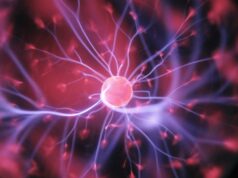 Transcranial direct current stimulation (tDCS) offers a novel intervention for individuals with gambling disorder, concluded a recent study that found that its use enhanced both decision making and cognitive flexibility in a population of gambling individuals. The study was conducted by Ahmet Zihni Soyata and colleagues (Istanbul University, Istanbul, Turkey) and recently published in European Archives of Psychiatry and Clinical Neuroscience.
Transcranial direct current stimulation (tDCS) offers a novel intervention for individuals with gambling disorder, concluded a recent study that found that its use enhanced both decision making and cognitive flexibility in a population of gambling individuals. The study was conducted by Ahmet Zihni Soyata and colleagues (Istanbul University, Istanbul, Turkey) and recently published in European Archives of Psychiatry and Clinical Neuroscience.
According to Soyata et al, gambling disorder refers to a progressive and chronic maladaptive disorder characterised by the failure to control gambling activities despite various aversive outcomes. The authors suggested that two components of cognitive control that play a critical role in the emergence, persistence and relapse of gambling behaviour include decision making and cognitive flexibility. A previous paper—published in the journal of Drug and Alcohol Dependence—even concluded that such deficits in decision making were found to be more common in gambling disorder compared with alcohol use disorder.
Therefore, Soyata and colleagues set out to investigate whether tDCS over the dorsolateral prefrontal cortex (DLPFC; implicated in executive functioning) would modulate decision making and cognitive flexibility in individuals with gambling disorder.
In total, 20 participants (all male) that met the criteria for gambling disorder were randomised 1:1 to either the treatment condition: receiving three every-other-day 20-minute mA sessions, consisting of active tDCS, or the control condition; receiving sham-stimulation. Neurocognitive tests such as the Iowa Gambling Task and the Wisconsin Card Sorting Task were used to assess decision making and cognitive flexibility, respectively. The tasks were administered to each participant prior to stimulation and following the last session. In this triple-blinded design, the participants, interventionists and the assessors were blinded to the condition during experimentation.
A repeated measures analysis of variance (RM-ANOVA) was employed in order to measure the effect of tDCS on the difference in pre- and post-scores on the two neurocognitive tasks. The primary outcome measures were pre-tDCS and post-tDCS Iowa Gambling Task net scores and the number of perseverative errors (the repetition of responses) in the Wisconsin Card Sorting Task.
Baseline clinical severity, depression, impulsivity levels and cognitive performance were found to be similar between groups. In terms of the post-stimulation findings, tDCS over the DLPFC resulted in more advantageous decision making, as the ANOVA indicated a main effect of time (pre- versus post-tDCS) on Iowa Gambling Task net scores (F1,16 =13.571, p=0.002), as well as a significant tDCS intervention x time interaction (F1,16=8.128, p=0.01, ɳp=0.330). Regarding the effect of tDCS on cognitive flexibility, no main effect of time on the number of perseverative errors was found. However, a significant intervention x time interaction was observed (F1,16=8.782, p<0.001, ɳp2=0.350).
Through these results, Soyata and colleagues were able to conclude that tDCS as a neuromodulatory technique enhanced the cognitive functioning of gambling individuals. They wrote: “For the first time […] three sessions of 20-minute tDCS over the bilateral DLPFC might be a novel intervention to enhance decision making and cognitive flexibility in individuals with gambling disorder”.
Of importance, the authors noted that the current findings are consistent with the majority of studies conducted in healthy populations, as well as a previously studied population of clinically impulsive veterans and individuals with addictive disorders. Furthermore, Soyata et al acknowledged that the results extend the literature by suggesting that the DLPFC presents as a potential target for tDCS in conditions associated with deficits of cognitive control.
However, the authors said that the results should not be interpreted as DLPFC specific due to the broad pattern of stimulation delivered by tDCS, which may have resulted in either direct or indirect stimulation to surrounding areas, such as the right orbitofrontal cortex—an area also highly implicated in decision making.
Moving forward, Soyata and colleagues suggested that future research efforts are needed to carefully examine the precise molecular mechanisms involved in the effect of tDCS; including short- and long-term effects of different electrode montages, as well as the dosing of tDCS in relation to the clinical variables and cognitive functions in gambling disorder.













